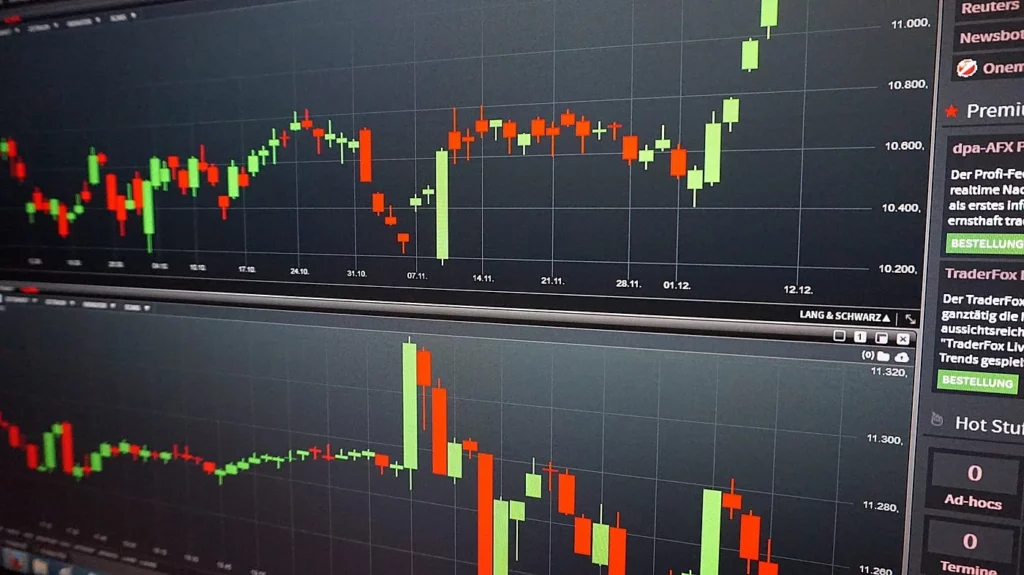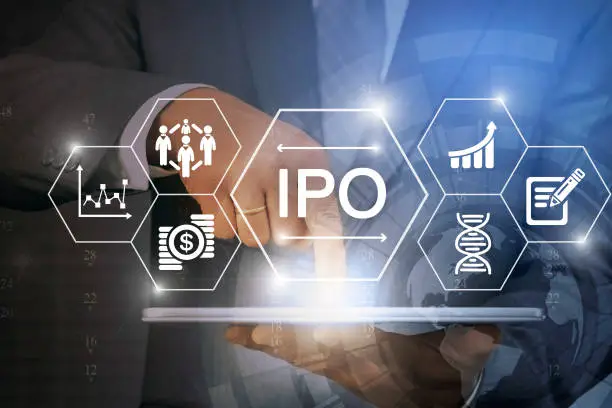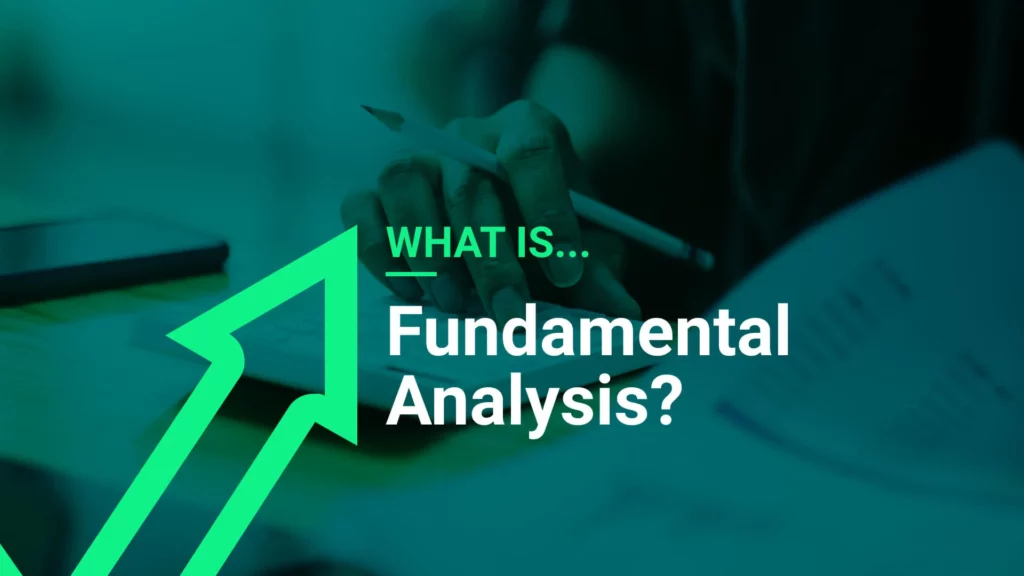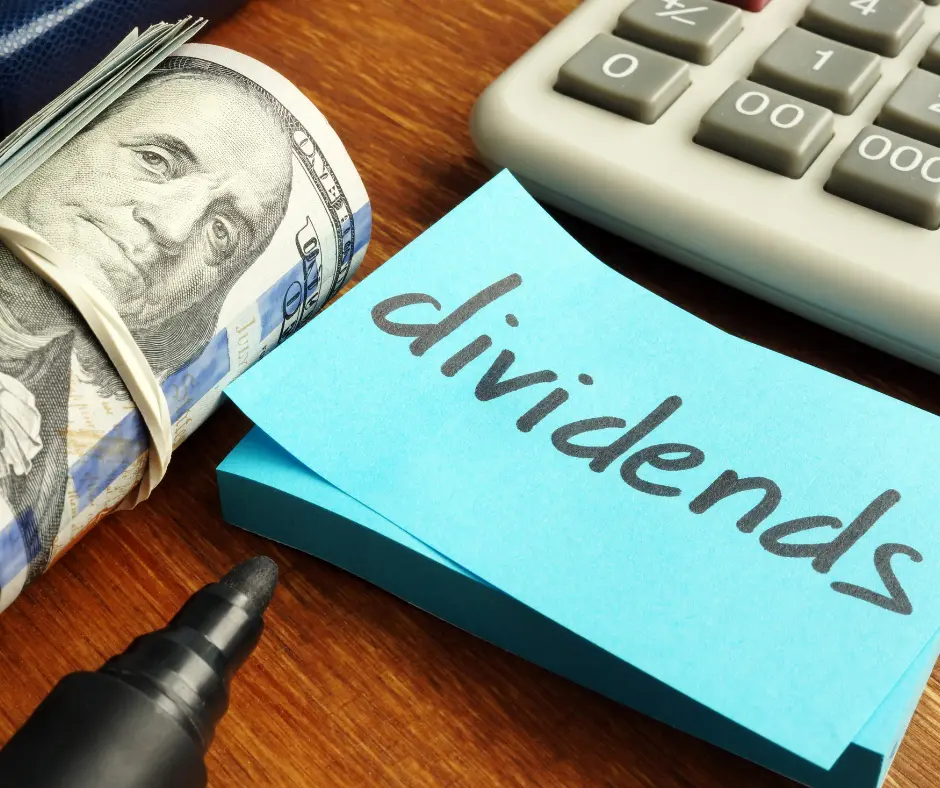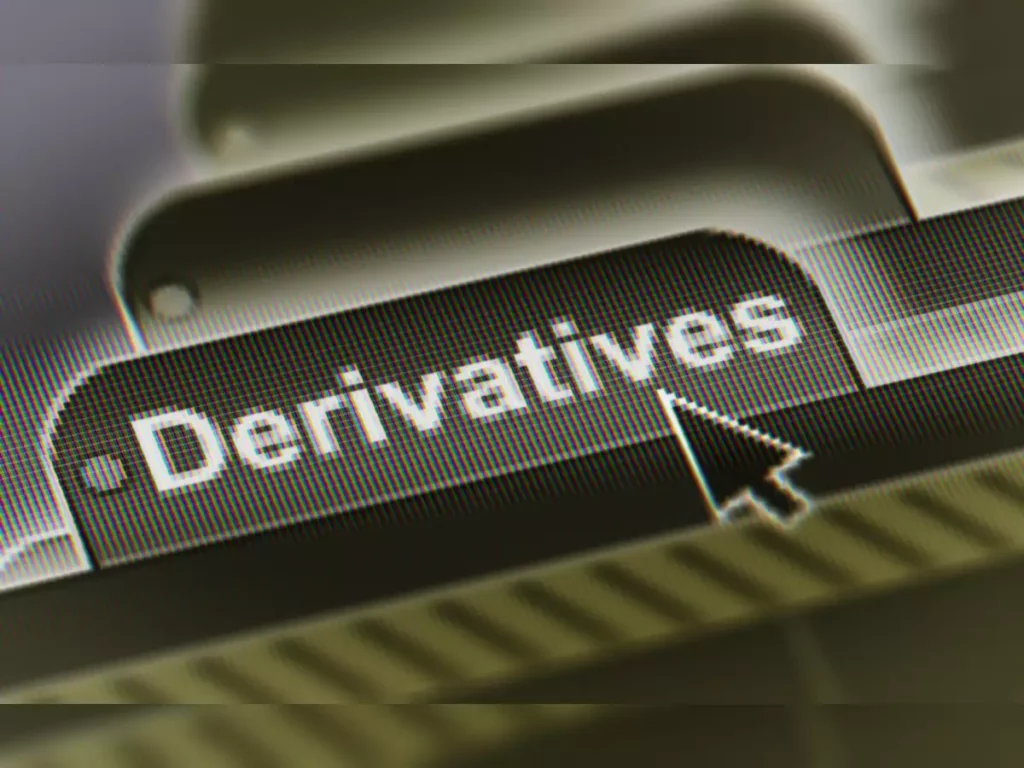What Is an Initial Public Offering (IPO)?
An initial public offering (IPO) is the procedure of releasing fresh shares of stock to the public for the first time in a private firm. A corporation can raise equity funding from the general public through an IPO.
Since there is often a share premium for present private investors, the transition from a private to a public firm can be a crucial period for private investors to completely realize rewards from their investment. Additionally, it enables public investors to take part in the sale.
How an Initial Public Offering (IPO) Works
An organization is regarded as private before an IPO. The company has expanded with a very small number of owners as a pre-IPO private company, including early investors like the founders, family, and friends as well as qualified investors like venture capitalists or angel investors.
A company taking part in an IPO is taking a big step because it opens up the possibility of significant capital raising. This increases the company’s capacity for development and growth. Additionally, the enhanced transparency and trustworthiness of the share listing may help it get better terms when looking for borrowed money.
A company will start to publicize its interest in going public when it reaches a point in its growth process where it believes it is mature enough for the demands of SEC laws as well as the advantages and obligations to public shareholders.
This stage of development often starts when a business achieves unicorn status, or a private valuation of about $1 billion.
However, depending on the market competition and their capacity to meet listing standards, private companies at varying values with sound fundamentals and demonstrated profitability potential may also be eligible for an IPO.
A company’s IPO shares are valued via underwriting due diligence. When a corporation goes public, the privately held shares are converted to publicly held shares, and the shares of the existing private shareholders are now worth the public market price. Special terms for private to public share ownership may also be included in the share underwriting.
Millions of investors have the enormous possibility to purchase firm shares and add money to the shareholders’ equity of a company through the public market. Any person or institution interested in making an investment in the company is considered a member of the public.
Overall, the components that create the firm’s new shareholders’ equity value are the number of shares the company sells and the price at which shares sell. When a company is both private and public, shareholders’ equity still refers to the shares that investors own, but when a company becomes public, the cash from the main issuance dramatically raises shareholders’ equity.
History of IPOs
Initial public offerings (IPOs) have long been a popular term on Wall Street and among investors. By selling shares of the Dutch East India Company to the general public, the Dutch are credited with launching the contemporary IPO.
Since then, firms have utilized IPOs as a means of raising funds from the general public by issuing shares of stock to the general public.
Through the years, IPOs have been recognized for uptrends and downtrends in issuance. Due to innovation and several other economic reasons, individual industries also undergo uptrends and downtrends in issuance. At the height of the dotcom boom, companies scrambled to list themselves on the stock market as technology IPOs surged.
The financial crisis of 2008 caused a year with the fewest IPOs ever. After the financial crisis of 2008, IPOs ceased, and for a few years after that, fresh listings were uncommon. A large portion of the IPO hype has recently shifted to a focus on so-called unicorns, or startup businesses with private valuations of above $1 billion. Investors and the media frequently make assumptions about these businesses’ choices to go public through an IPO or remain private.
What Is the IPO Process?
There are essentially two steps in the IPO process. The pre-marketing stage of the offering is the first, and the actual initial public offering is the second. A company that wants to go public will either request private bids from underwriters or make a public announcement to pique interest.
The corporation selects the underwriters, who oversee the IPO process. A business may select one or more underwriters to oversee certain phases of the IPO process jointly. Every step of the IPO process, including due diligence, document preparation, filing, marketing, and issuance, is handled by the underwriters.
Steps to an IPO
1.Proposals
The appropriate type of security to issue, the offering price, the number of shares, and the anticipated time frame for the market offering are all discussed in the proposals and valuations that the underwriters submit.
2.Underwriter
Through an underwriting agreement, the corporation selects its underwriters and formally accepts to underwrite terms.
3.Team
Underwriters, attorneys, certified public accountants (CPAs), and Securities and Exchange Commission (SEC) specialists constitute IPO teams.
4.Documentation
The company’s information is gathered for the necessary IPO paperwork. The main IPO filing document is the S-1 Registration Statement. The prospectus and the privately held filing information make up its two components.4-6 of “Form S-1,” U.S. Securities and Exchange Commission.
The S-1 contains preliminary details regarding the anticipated filing date.2 In the course of the pre-IPO process, it will be amended frequently. The prospectus that is presented is also updated frequently.
5.Marketing and Updates
For the pre-marketing of the new stock issuance, marketing materials are prepared. To determine a final offering price and gauge demand, management and underwriters publicize the share issuance. In the course of the marketing process, underwriters are permitted to modify their financial analysis. This may entail altering the IPO price or the issue date if necessary. Companies take the appropriate actions to satisfy particular requirements for public share offerings. Both SEC standards for public firms and exchange listing requirements must be followed by businesses.
6.Board and Processes
Create a board of directors and make sure that procedures are in place for reporting quarterly auditable financial and accounting data.
7.Shares Issued
On the IPO date, the company issues its shares. The balance sheet’s stockholders’ equity is shown on the statement of cash received from the primary issuance of capital to shareholders. The value of each share on the balance sheet is then entirely based on the shareholders’ equity per share valuation of the corporation.
8.Post IPO
There might be certain post-IPO provisions put in place. Following the day of the initial public offering (IPO), underwriters might have a set period of time in which to purchase more shares. During this time, certain investors can experience calm periods.
Advantages and Disadvantages of an IPO
Advantages
One of the main benefits is that the company can raise money by accepting investments from the entire investing public. This makes acquisition deals (share conversions) simpler to complete and improves the company’s visibility, reputation, and public image, all of which can boost sales and profitability.
A firm can typically benefit from more favourable credit borrowing conditions than a private company thanks to the increased transparency that comes with compulsory quarterly reporting.
Disadvantages
Companies may encounter a number of drawbacks to going public and may decide to adopt alternative tactics. One of the biggest drawbacks is the high cost of initial public offerings (IPOs), as well as the continuous and frequently unrelated costs of sustaining a public company.
For management, which may be payed and assessed largely on stock performance rather than actual financial results, fluctuations in a company’s share price can be a distraction. The business must additionally publish financial, accounting, tax, and other business data. It might be forced to publicly divulge trade secrets and business strategies during these disclosures, which could give rivals an advantage.
It may be more challenging to keep competent managers who are prepared to take chances if the board of directors has rigid leadership and governance.Companies may also request bids for a takeover rather than going public. In addition, businesses could look into several alternatives.
IPO Alternatives
Direct Listing
When there are no underwriters involved, the IPO is referred to as a direct listing. Direct listings omit the underwriting step, putting the issuer at greater risk if the offering fails, but they also may result in higher share prices for the issuer. A direct offering is typically only possible for a business with a strong brand and a lucrative industry.
Dutch Auction
A Dutch auction does not establish an IPO price. Shares can be bid on by interested buyers, along with their desired price. The available shares are subsequently distributed to the bidders who offered the highest price.
Investing in an IPO
Only when extensive evaluation and analysis is complete can a firm decide that raising cash through an IPO will optimize the profits for early investors and raise the most money for the business. The likelihood of future growth is therefore strong, and many public investors will be in line to purchase shares for the first time when the IPO decision is made. When an initial public offering (IPO) attracts a large number of buyers from the primary issuance, it becomes even more desirable because IPOs are sometimes discounted to ensure sales.
Initially, the underwriters typically determine the IPO’s pricing through their pre-marketing procedure. Fundamental methodologies are used to value the company as the basis for the IPO price. Discounted cash flow, which is the net present value of the company’s anticipated future cash flows, is the most widely utilized technique.
On a per-share basis, underwriters and potential investors examine its worth. In addition to these, equity value, enterprise value, comparable firm adjustments, and more may be utilized to determine the price. Demand is taken into account by the underwriters, although they also frequently lower the price to boost sales on the IPO day.
Analyzing the technicals and fundamentals of an IPO issuance can be challenging. Investors will read the headlines, but the prospectus, which is available as soon as the firm files its S-1 Registration, should be the primary source of information.3 There is a ton of helpful information in the prospectus. Investors should pay close attention to the management team’s comments, the underwriters’ qualifications, and the deal’s specifications. Big investment banks that can effectively market a new issue will often support successful IPOs.
In general, the path to an IPO is fairly drawn-out. when a result, when interest grows, public investors can keep up with breaking news and other facts to support their estimation of the ideal and prospective offering price.
Demand from major private accredited investors and institutional investors, who have a significant impact on the IPO’s trading on its first day, is often included in the pre-marketing process. Public investors don’t participate until the final offering day. All investors are eligible to participate, but only those with trading access are allowed to do so. Having an account with a brokerage platform that has received an allocation and wants to distribute it with its clients is the most typical route for an individual investor to obtain shares.
Performance of IPOs
The return from an IPO, which is frequently closely watched by investors, can be impacted by a number of factors. Investment banks may overhype some IPOs, which can result in initial losses. However, when they are made available to the public, the bulk of IPOs are renowned for increasing in short-term trading. Performance of IPOs depends on a few important factors.
Lock-Up
If you examine the charts after many IPOs, you’ll see that the stock has a sharp decline after a few months. This frequently occurs as a result of the lock-up period expiring. The underwriters need corporate insiders, including as executives and staff, to sign a lock-up agreement before a firm goes public.
Lock-up agreements are enforceable arrangements that forbid insiders of the company from selling any shares of stock for a predetermined period of time. Three to 24 months are possible as the timeframe. The minimum lock-up time stipulated by Rule 144 (SEC rule) is ninety days, although the underwriters may choose a lock-up time that is significantly longer.4 The issue is that all insiders are allowed to sell their shares once lockups expire.
Waiting Periods
In the terms of their offerings, certain investment banks contain waiting periods. This reserves a certain number of shares for purchase at a later time. If the underwriters decide not to purchase this allocation, the price could drop.
Flipping
The act of “flipping” involves reselling an IPO shares within a short period of time in order to make a quick profit. It frequently happens when a stock is discounted and then surges on its first trading day.
Tracking IPO Stocks
When an existing firm spins out a division of the business as a separate legal organization, creating tracking stocks, it is closely akin to a standard IPO. The idea behind tracking stocks and spin-offs is that occasionally, a company’s many divisions may be worth more as a separate entity than as a whole. For instance, if a segment within an otherwise slowly expanding firm has a high growth potential but big current losses, it would be profitable to carve it out, keep the parent company as a significant shareholder, and then allow it to raise extra capital through an IPO.
These IPO chances can be intriguing from the standpoint of an investor.
Investors typically learn a lot about the parent firm and its ownership share in the divesting company through a spin-off of an established business. More information is typically preferable than less when it comes to educating potential investors, therefore astute investors may find fantastic chances in this kind of scenario. Because investors are generally better knowledgeable, spin-offs typically experience less initial volatility.
What Is the Purpose of an Initial Public Offering?
Large corporations typically utilize IPOs as a means of obtaining money by selling their shares to the general public for the first time. Shares of the company are traded on a stock exchange after an IPO. One of the major reasons for doing an IPO is to raise money through the sale of shares, to give firm founders and early investors liquidity, and to benefit from a greater value.
Can Anybody Invest in an IPO?
For a new IPO, there will frequently be greater demand than there is supply. Because of this, there is no assurance that all potential investors in an IPO will be able to buy shares. While entry to an IPO may occasionally be restricted to a firm’s larger clients, those interested in taking part may be able to do so through their brokerage firm. A mutual fund or other investment vehicle that focuses on IPOs offers an additional choice for investing.
Is an IPO a Good Investment?
A lot of media attention is usually given to initial public offerings, some of which is done on purpose by the firm going public. In general, IPOs are well-liked by investors due to their propensity to induce erratic price changes on the day of the IPO and shortly thereafter. significant losses as well as significant gains might occasionally result from this. Investors should ultimately evaluate each IPO in light of their financial situation and risk tolerance, as well as the prospectus of the company that is going public.
How Is an IPO Priced?
A corporation must list an initial value for its new shares when it goes public. The underwriting banks that will market the deal are in charge of doing this. The fundamentals and growth prospects of the company play a significant role in determining the value of the company. Since IPOs could come from relatively young businesses, they might not yet have a demonstrated history of profitability. Comparables may be used in its place. However, in the days preceding the IPO, supply and demand for the IPO shares will also be important.
FOR MORE INFO CLICK THIS SITE:https://learningsharks.in/
FOLLOW OUR PAGE:https://www.instagram.com/learningsharks/?hl=en
FacebookTwitterEmailWhatsAppTelegramShare




